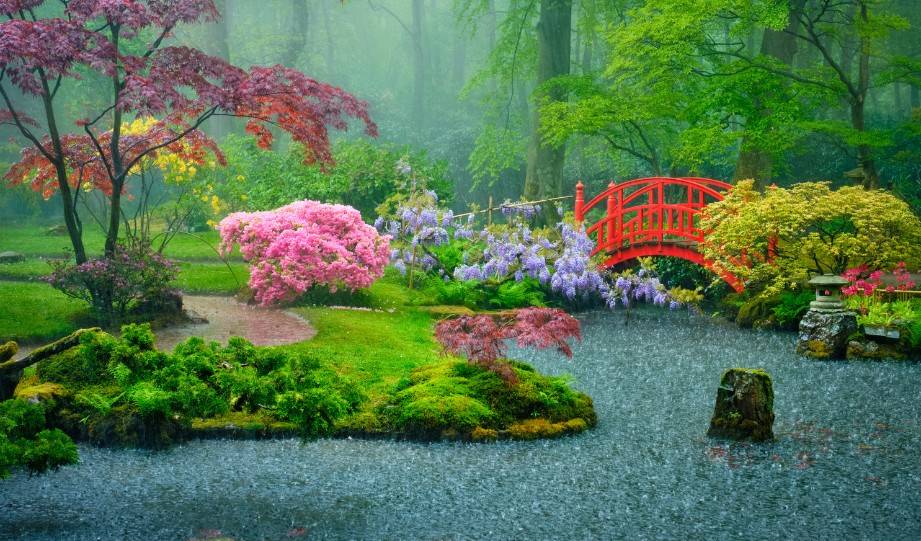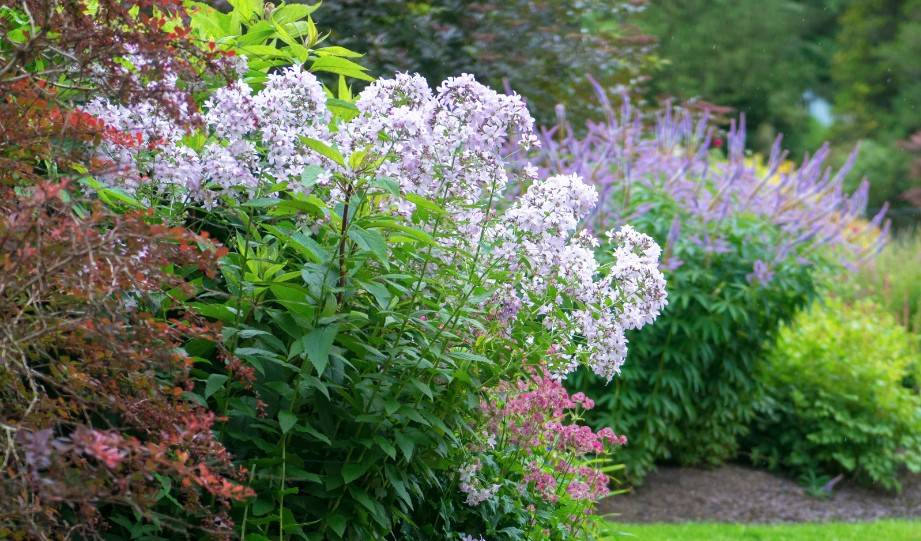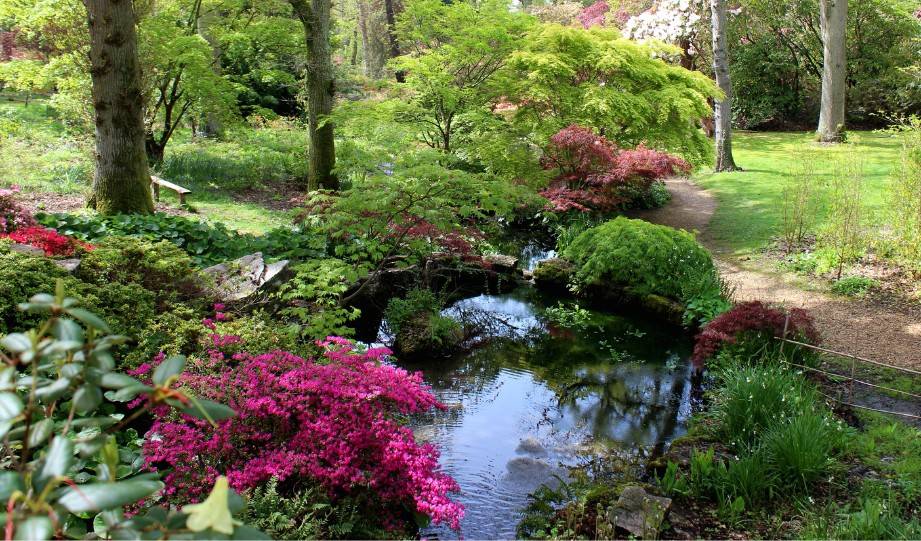Years ago, intrigued by the concept of a garden that thrived on rain, I decided to transform a soggy corner of my yard into my first rain garden.
It was a revelation.
Not only did the garden solve my drainage problem, but it also blossomed into a stunning, self-sustaining ecosystem.
This experience was my foray into sustainable gardening, a practice that not only beautifies your space but also benefits the environment.
In this article, you’ll learn how to create your own rain garden, from selecting the right location to choosing the best plants. Get ready to turn rainwater into a resource, adding beauty and sustainability to your yard.
What is a Rain Garden?
A rain garden is a shallow depression in the landscape, strategically placed to capture and utilize rainwater runoff from impervious surfaces like roofs, driveways, and walkways.
Unlike traditional gardens, which may require regular watering and maintenance, rain gardens are designed to be both functional and self-sustaining. They take advantage of natural rainfall, reducing the need for supplemental irrigation.
A rain garden also serves as a natural filtration system, slowing down the runoff and allowing it to soak into the ground, thereby reducing erosion, water pollution, and the burden on municipal stormwater systems.
By incorporating native plants that are adapted to local conditions and wet soil, rain gardens support local biodiversity, providing habitat for wildlife such as birds and pollinators.
This makes them a key component in sustainable gardening practices, promoting environmental conservation right in your backyard.
Benefits of a Rain Garden

Rain gardens offer a multitude of benefits, both environmental and aesthetic, making them an attractive addition to any yard.
From a sustainability perspective, one of the primary advantages is water conservation. By capturing rainwater runoff, rain gardens reduce the need for supplemental watering, relying instead on natural precipitation.
This not only conserves water but also decreases the demand on municipal water systems and lowers water bills.
In terms of environmental impact, rain gardens play a crucial role in improving water quality. As rainwater filters through the garden, it is naturally cleansed of pollutants, such as pesticides and fertilizers, before it recharges local aquifers or flows into streams and rivers.
This filtration process helps protect aquatic ecosystems and maintains the health of local water bodies.
Additionally, rain gardens contribute to erosion control. By slowing down runoff, they prevent soil erosion and the loss of valuable topsoil, ensuring that your garden and nearby natural areas remain fertile and stable.
This is particularly important in areas prone to heavy rainfalls, where unchecked runoff can lead to significant soil degradation and sedimentation in waterways.
Beyond their environmental advantages, rain gardens also offer aesthetic benefits. They provide an opportunity to create a unique, visually appealing landscape feature that changes throughout the seasons.
The use of native plants not only supports local biodiversity by providing habitat and food sources for wildlife, such as birds, butterflies, and bees, but also adds color, texture, and beauty to your yard.
These plants are well-adapted to local conditions, making them more resilient and easier to care for than many traditional garden plants.
Planning Your Rain Garden

Choosing the Right Location
Choosing the right location for your rain garden is crucial for its success.
First, observe how water flows in your yard during a rainfall to identify potential spots where water naturally accumulates. This area will benefit most from a rain garden’s water-absorbing capabilities.
However, ensure it’s at least 10 feet away from your home to prevent any potential water damage to your foundation.
Sunlight is another key factor; most native plants suitable for rain gardens thrive in full to partial sun.
Finally, consider the soil type. While rain gardens can be adapted to various soils, areas with good drainage are ideal, as they facilitate the filtration process and support healthy plant growth.
By considering these factors, you’ll select a location that maximizes the environmental and aesthetic benefits of your rain garden.
Size and Shape Considerations
The size and shape of your rain garden largely depend on the amount of runoff it will need to manage and the available space in your yard.
As a rule of thumb, a rain garden should be about 20% of the area that drains into it.
For instance, if your roof and driveway collectively cover 1,000 square feet, aim for a rain garden that’s around 200 square feet.
The shape, while flexible, should mimic natural contours for efficiency in capturing runoff.
Oval or kidney shapes are popular for their natural appearance and effectiveness.
Adjusting size and shape to fit your space while ensuring functionality is key to a successful rain garden.
Selecting Plants for Your Rain Garden
Selecting the right plants is vital for a thriving rain garden.
Focus on native plants that are accustomed to your local climate and soil conditions. These plants are naturally more resilient and require less maintenance.
For areas within the garden that will be wettest, choose species that can tolerate standing water, such as Swamp Milkweed or Blue Flag Iris.
For the garden’s edges, where the soil will be drier, opt for plants like Black-eyed Susan or Butterfly Weed.
Using a mix of perennials, grasses, and shrubs not only creates a visually appealing garden but also supports local biodiversity by providing habitat and food for wildlife.
Prioritizing natives ensures your rain garden enhances the local ecosystem, promoting environmental sustainability.
Building Your Rain Garden

Preparing the Site
Before planting your rain garden, proper site preparation is essential.
Start by testing the soil drainage in your chosen location. Dig a small hole, fill it with water, and observe how quickly it drains.
Ideal drainage will see the hole empty in 24 to 48 hours, indicating the site can support a rain garden.
Next, clear the area of grass, weeds, and any debris. This might involve digging out existing vegetation or using a sod cutter for larger areas.
Creating the Garden Layout
Once your site is prepared, it’s time to mark the layout of your rain garden.
Use a hose or rope to outline its shape on the ground, allowing for adjustments until you’re satisfied with the design.
Next, dig the garden bed, aiming for a depth of 4 to 8 inches to optimize water absorption without creating standing water that lasts longer than 24 hours.
Slope the sides gently to allow water to flow into the center, and ensure the bottom is level to distribute water evenly.
Planting and Mulching
When planting your rain garden, arrange plants with both ecological benefit and aesthetic appeal in mind.
Place taller plants towards the center or back of the garden and shorter ones at the edges for a natural, visually pleasing gradient.
Ensure each plant has enough space to reach its full size without overcrowding.
After planting, apply a layer of mulch around the plants. Mulch helps conserve moisture, suppresses weeds, and adds a finished look to the garden.
Choose a native or organic mulch that complements the native plants in your garden, supporting the overall health and sustainability of your rain garden ecosystem.
Maintenance Tips
Maintaining your rain garden ensures its health and longevity. Regular weeding keeps invasive species at bay, allowing native plants to thrive.
Although rain gardens are designed to utilize natural rainfall, during prolonged dry spells, additional watering may be necessary to support young plants until they’re established.
Seasonal cleanup is also important; remove dead plant material in the fall to prevent decay and ensure the garden is ready to absorb winter rains.
In spring, trim any dead parts from perennials to encourage new growth.
These simple practices keep your rain garden functional and beautiful throughout the year.

Read More:
Troubleshooting Common Rain Garden Issues
Common challenges in rain gardens include standing water, plant failure, and erosion, but these can be managed with the right approaches.
Standing Water
If standing water persists for more than 48 hours, consider adding more absorbent soil mixtures or adjusting the depth of the garden to improve drainage.
Plant Failure
Plant failure often results from choosing species unsuited to the local climate or soil conditions.
Research native plants that thrive in wet environments and ensure they’re appropriate for your garden’s specific conditions.
Erosion
Erosion can be a sign of improper water flow into the garden. Installing river rocks or a small retaining wall at the garden’s inlet can slow water entry, reducing erosion.
Additionally, planting ground covers can help stabilize the soil.
Conclusion
Rain gardens are more than just a beautiful addition to your yard; they are a pivotal component in sustainable landscaping. By creating a rain garden, you’re not only enhancing your own space but also contributing positively to the environment.
These gardens help manage stormwater, support local ecosystems, and reduce pollution, all while offering a sanctuary for wildlife.
If you’re looking for a way to make a difference right in your backyard, a rain garden is a perfect project. Start planning yours today and take the first step towards a more sustainable and beautiful garden.


